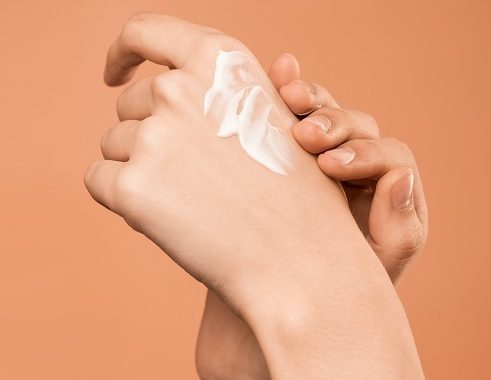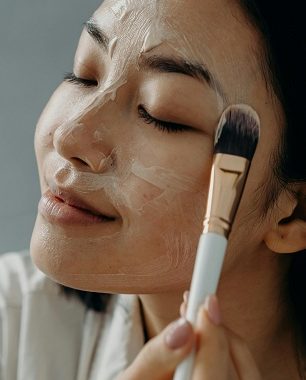
Dermaplaning, a popular skincare technique, involves exfoliating the skin by gently scraping away dead cells and fine facial hair. While professional dermaplaning sessions are widely available, many individuals opt for at-home dermaplaning for convenience and cost-effectiveness. In this article, we’ll explore the best practices for dermaplaning at home, ensuring a safe and effective experience for achieving radiant, smoother skin.
Dermaplaning at home steps for beginners
- Understanding Dermaplaning: Dermaplaning involves using a sterile, surgical-grade scalpel to scrape off the top layer of dead skin cells and vellus hair (peach fuzz). This process not only promotes smoother skin but also enhances the penetration of skincare products, leaving the complexion looking vibrant.
- Choosing the Right Tools: Selecting the right tools is crucial for a successful at-home dermaplaning session. Opt for a high-quality dermaplaning tool with a sharp, single-use blade to ensure precision and safety. Several reputable brands offer dermaplaning kits designed for home use, often including detailed instructions.
- Prepping the Skin: Before dermaplaning, thoroughly cleanse the skin to remove any makeup, oils, or debris. Apply a gentle exfoliating cleanser to ensure a clean canvas for the dermaplaning tool. It’s advisable to follow this with a toner to balance the skin’s pH levels.
- Technique Matters: Hold the dermaplaning tool at a 45-degree angle and use short, feathering strokes in the direction of hair growth. Stretch the skin taut with your free hand to create a smooth surface for the blade. Exercise caution around sensitive areas such as the eyes and lips. Remember, gentle and controlled movements are key.
- Post-Dermaplaning Skincare: After dermaplaning, apply a soothing and hydrating serum or moisturizer to replenish the skin. Sunscreen is crucial to protect the newly revealed skin from UV damage. Avoid harsh skincare products, such as retinoids or acids, for a day or two after dermaplaning to prevent irritation.
- Frequency and Maintenance: Dermaplaning at home can typically be done every 3-4 weeks, depending on individual skin sensitivity. Regular maintenance ensures the continued benefits of smoother skin and improved product absorption. Dispose of the used blade after each session and keep the dermaplaning tool clean.
- Potential Risks and Considerations: While dermaplaning is generally safe, individuals with certain skin conditions, such as active acne or rosacea, should consult with a dermatologist before attempting at-home dermaplaning. Additionally, users should be mindful of the importance of proper technique and hygiene to minimize the risk of irritation or infection.
Dermaplaning at home can be a rewarding addition to one’s skincare routine when done with care and precision. By selecting the right tools, preparing the skin adequately, mastering the technique, and following up with proper post-dermaplaning skincare, individuals can achieve a radiant and smoother complexion from the comfort of their own homes. Always prioritize safety, hygiene, and individual skin needs to make the most of this popular skincare practice.
How to dermaplane at home without breaking out
Dermaplaning at home is a popular method for achieving smoother, radiant skin, but concerns about potential breakouts can deter some individuals. However, with the right technique and precautions, it’s possible to enjoy the benefits of dermaplaning without compromising skin clarity. In this guide, we’ll explore the steps to dermaplane at home while minimizing the risk of breakouts.
- Gather the Right Tools: Start by acquiring a high-quality dermaplaning tool with a sharp, single-use blade. Opt for tools specifically designed for at-home use, ensuring they are sterile and safe. Cleanse the dermaplaning tool before each session to maintain hygiene.
- Prepare Your Skin: Thoroughly cleanse your face with a gentle, hydrating cleanser to remove any makeup, oil, or impurities. Pat your skin dry and avoid using harsh exfoliants or abrasive products before dermaplaning. The goal is to create a clean and smooth canvas for the procedure.
- Apply a Gentle Toner: Use a mild, alcohol-free toner to balance the skin’s pH levels. This step helps prime the skin for dermaplaning by removing any remaining traces of cleanser and ensuring an optimal environment for the blade.
- Stretch and Hold the Skin Taut: During the dermaplaning process, it’s crucial to stretch the skin gently with your free hand. This ensures a flat surface for the blade, reducing the risk of nicks and promoting smoother strokes. Hold the dermaplaning tool at a 45-degree angle and use short, controlled strokes in the direction of hair growth.
- Avoid Active Breakout Areas: If you are prone to breakouts, exercise caution around active acne areas. Dermaplaning directly over active breakouts can worsen inflammation and potentially lead to scarring. Instead, work around these areas and focus on smoother skin regions.
- Post-Dermaplaning Skincare: After completing the dermaplaning session, apply a calming and hydrating serum or moisturizer to soothe the skin. Opt for products with gentle ingredients to avoid irritation. It’s crucial to use a broad-spectrum sunscreen with at least SPF 30 to protect the newly exposed skin from UV damage.
- Maintain Hygiene and Tool Care: Dispose of the used dermaplaning blade after each session and clean the tool thoroughly. Regularly disinfecting the dermaplaning tool prevents bacterial buildup, reducing the risk of post-treatment breakouts.
- Monitor Skin Sensitivity: Pay attention to your skin’s reaction in the days following dermaplaning. If you notice increased sensitivity or any signs of irritation, consider extending the time between sessions or adjusting your skincare routine accordingly.
What oil to use for dermaplaning at home
Choosing the right oil for dermaplaning at home is crucial for ensuring a smooth and effective process while minimizing the risk of irritation or breakouts. Here’s a detailed guide on selecting the appropriate oil for at-home dermaplaning:
- Jojoba Oil: Jojoba oil is a popular choice for dermaplaning due to its similarity to the skin’s natural sebum. It is non-comedogenic, meaning it won’t clog pores, making it suitable for all skin types. Jojoba oil provides a lubricating barrier for the dermaplaning tool, allowing it to glide smoothly across the skin.
- Sweet Almond Oil: Sweet almond oil is rich in vitamins and has emollient properties, making it a nourishing option for dermaplaning. It is lightweight and absorbs easily into the skin, leaving it hydrated without feeling greasy. Sweet almond oil is suitable for most skin types, but individuals with nut allergies should avoid it.
- Apricot Kernel Oil: Apricot kernel oil is another lightweight and non-comedogenic oil that works well for dermaplaning. It is rich in fatty acids and vitamins, providing hydration without leaving a heavy residue. This oil is particularly suitable for sensitive or dry skin.
- Grapeseed Oil: Grapeseed oil is a light and easily absorbed oil that is high in antioxidants. It’s known for its non-greasy texture, making it an excellent choice for dermaplaning. Grapeseed oil is often recommended for individuals with oily or acne-prone skin due to its astringent properties.
- Argan Oil: Argan oil is derived from the kernels of the argan tree and is renowned for its hydrating and nourishing properties. It is suitable for most skin types, including dry and sensitive skin. Argan oil is rich in vitamin E and antioxidants, promoting skin health.
- Coconut Oil: While coconut oil is a popular choice for many skincare routines, it may not be the best option for everyone. While it provides excellent lubrication for dermaplaning, it can be comedogenic for some individuals, potentially leading to breakouts. It’s advisable to patch-test coconut oil before using it for dermaplaning.
- Sunflower Seed Oil: Sunflower seed oil is lightweight, non-comedogenic, and rich in vitamin E. It’s suitable for various skin types and can be a good choice for dermaplaning, offering hydration without a heavy feel.
When applying oil for dermaplaning:
- Use a small amount: Apply a thin layer of oil to the skin, ensuring it’s enough for the dermaplaning tool to glide smoothly without excess residue.
- Consider your skin type: Choose an oil based on your skin’s specific needs, whether it’s hydration, nourishment, or addressing sensitivity.
- Perform a patch test: Before incorporating any oil into your dermaplaning routine, conduct a patch test on a small area to check for any adverse reactions or allergies.
Ultimately, the choice of oil for dermaplaning depends on individual skin preferences and concerns. It’s essential to listen to your skin’s needs and adjust your choice accordingly. If unsure, consulting with a dermatologist can provide personalized recommendations based on your skin type and conditions.
Dermaplaning at home pros and cons
Dermaplaning at home has become a popular skincare practice for achieving smoother and radiant skin. While it offers several benefits, there are also potential drawbacks to consider. Here’s a detailed exploration of the pros and cons of dermaplaning at home:
Pros:
- Smoothing and Exfoliation:
- Pro: Dermaplaning removes dead skin cells and vellus hair, resulting in a smoother complexion. This exfoliation enhances the skin’s texture and promotes a more even tone.
- Enhanced Skincare Product Absorption:
- Pro: By eliminating the barrier of dead skin cells and peach fuzz, dermaplaning allows skincare products to penetrate more effectively. This can maximize the benefits of serums, moisturizers, and other treatments.
- Reduced Appearance of Fine Lines:
- Pro: Dermaplaning can help diminish the appearance of fine lines and wrinkles. The exfoliation process stimulates cell turnover, contributing to a more youthful-looking complexion.
- Makeup Application:
- Pro: Makeup application tends to be smoother and more flawless after dermaplaning. Without the presence of facial hair, products can adhere more evenly to the skin.
- Minimal Downtime:
- Pro: Unlike certain professional skincare procedures, dermaplaning typically involves minimal downtime. Individuals can resume their regular activities shortly after the treatment.
- Reduced Likelihood of Allergic Reactions:
- Pro: Dermaplaning doesn’t involve the use of chemical agents, making it suitable for individuals with sensitive skin who may be prone to allergic reactions.
Cons:
- Risk of Irritation:
- Con: Improper technique or excessive pressure during dermaplaning can lead to skin irritation, redness, or even small nicks. It’s crucial to follow proper guidelines to minimize these risks.
- Not Suitable for Active Acne:
- Con: Dermaplaning is not recommended for individuals with active acne or inflamed skin conditions. The procedure can exacerbate inflammation and potentially lead to scarring.
- Temporary Results:
- Con: The results of dermaplaning are temporary, typically lasting a few weeks. Regular sessions are necessary to maintain the benefits, which may not be suitable for everyone’s lifestyle.
- Potential for Ingrown Hairs:
- Con: While dermaplaning itself doesn’t cause ingrown hairs, improper aftercare or pre-existing conditions may contribute to their development.
- Professional Skill vs. At-Home Technique:
- Con: Achieving optimal results at home requires a steady hand and a good understanding of the dermaplaning technique. Some individuals may prefer professional sessions to ensure precision and safety.
- Equipment and Maintenance Costs:
- Con: Purchasing quality dermaplaning tools and maintaining hygiene can incur costs over time. It’s essential to invest in reputable tools and replace blades as needed to prevent infection or irritation.
- Not Ideal for Everyone:
- Con: Dermaplaning may not be suitable for individuals with certain skin conditions or those prone to excessive bleeding. Consulting with a dermatologist before attempting dermaplaning is advisable.
In conclusion, while dermaplaning at home offers numerous benefits for achieving smoother skin, it’s important to approach it with caution and adhere to proper guidelines. Individual skin types and conditions play a significant role in determining whether dermaplaning is the right choice, and consulting with a skincare professional can provide personalized recommendations.
What to put on face after dermaplaning at home
After dermaplaning at home, it’s essential to follow a proper post-care routine to soothe the skin, promote healing, and maximize the benefits of the treatment. Here’s a detailed guide on what to put on your face after dermaplaning at home:
- Gentle Cleanser:
- Use a mild, fragrance-free cleanser to wash your face. This helps remove any residual oil, dead skin cells, or debris from the dermaplaning process. Avoid harsh or exfoliating cleansers immediately after dermaplaning to prevent irritation.
- Alcohol-Free Toner:
- Apply an alcohol-free toner to balance the skin’s pH levels. A gentle toner can help soothe the skin and prepare it for subsequent skincare products.
- Hyaluronic Acid Serum:
- Hyaluronic acid is an excellent choice for post-dermaplaning hydration. It helps attract and retain moisture, promoting skin plumpness and reducing the risk of dryness. Apply a few drops of hyaluronic acid serum to enhance skin hydration.
- Calming Moisturizer:
- Opt for a soothing and non-comedogenic moisturizer to lock in hydration. Look for ingredients like aloe vera, chamomile, or calendula to calm any potential irritation. Avoid heavy or occlusive moisturizers that may clog pores.
- Sunscreen:
- Sun protection is crucial after dermaplaning, as the newly exposed skin is more susceptible to UV damage. Apply a broad-spectrum sunscreen with at least SPF 30, and reapply throughout the day if necessary.
- Avoid Harsh Ingredients:
- Refrain from using products with harsh or active ingredients immediately after dermaplaning. Steer clear of retinoids, alpha hydroxy acids (AHAs), beta hydroxy acids (BHAs), and other exfoliating agents for a day or two to prevent irritation.
- Skip Makeup for a Few Hours:
- Give your skin some time to recover before applying makeup. Skipping makeup for a few hours allows the skin to breathe and reduces the risk of irritation or clogged pores.
- Cool Compress for Redness:
- If you experience mild redness, consider applying a cool compress to soothe the skin. A clean, damp cloth or a cool gel mask can help alleviate any temporary redness or inflammation.
- Stay Hydrated:
- Hydration is essential for skin recovery. Drink plenty of water to support overall skin health and aid in the body’s natural healing processes.
- Avoid Touching the Face:
- Refrain from touching your face with unwashed hands to prevent the introduction of bacteria. This is especially important immediately after dermaplaning when the skin’s barrier is temporarily compromised.
- Regular Maintenance:
- Follow a consistent skincare routine to maintain the results of dermaplaning. Regularly cleanse, moisturize, and protect your skin from the sun to support its health and vitality.
Remember that individual skin sensitivity varies, and it’s crucial to listen to your skin’s needs. If you experience prolonged redness, irritation, or any unexpected reactions, consult with a dermatologist for personalized guidance. Following a careful post-dermaplaning skincare routine enhances the overall effectiveness of the treatment while minimizing the risk of adverse effects.
�
Dermaplaning at home how often
Dermaplaning at home can be performed every 3-4 weeks for optimal results. This timeframe allows the skin to recover and ensures that the benefits, including smoother texture and enhanced product absorption, are maintained. However, the frequency may vary based on individual skin sensitivity and needs. It’s essential to listen to your skin and adjust the dermaplaning schedule accordingly, avoiding over-exfoliation and potential irritation. Consulting with a dermatologist can provide personalized guidance on the ideal frequency for your skin type and concerns.
Dermaplaning at home tips
Dermaplaning at home can be an effective way to achieve smoother skin, but it requires careful execution. Here are some brief tips for dermaplaning at home:
- Invest in Quality Tools: Choose a dermaplaning tool with a sharp, single-use blade designed for at-home use.
- Cleanse Thoroughly: Begin with a gentle cleanser to remove makeup, oils, and impurities, ensuring a clean canvas for dermaplaning.
- Use Gentle Strokes: Hold the tool at a 45-degree angle and use short, feathering strokes in the direction of hair growth to avoid irritation.
- Stretch the Skin Taut: Stretch the skin with your free hand to create a smooth surface, aiding the dermaplaning tool’s glide.
- Avoid Active Breakouts: Steer clear of areas with active acne to prevent exacerbating inflammation and potential scarring.
- Follow with a Calming Routine: Apply a hydrating serum, soothing moisturizer, and sunscreen post-dermaplaning to protect and nourish the skin.
- Practice Regularly: Dermaplaning is most effective with regular maintenance sessions, typically every 3-4 weeks.
- Know Your Limits: Understand your skin’s sensitivity and be cautious, adjusting pressure and frequency based on your skin’s response.
- Dispose of Blades Properly: Dispose of used blades safely, and keep the dermaplaning tool clean to prevent infection.
- Patch Test: Conduct a patch test before your first full dermaplaning session to check for any adverse reactions.
Remember, if you have any concerns or specific skin conditions, consult with a dermatologist before attempting dermaplaning at home.
Further Reading:
How To Dermaplane At Home, Including The Best Tips And Tools
Shaving Face for Smoother Skin (‘Dermaplaning’ at home)
FAQs:
Is it OK to Dermaplane at home?
Yes, dermaplaning at home is generally safe when performed with proper tools and techniques. Follow hygiene practices, use a quality dermaplaning tool with a sharp blade, and adhere to recommended guidelines. Avoid active breakouts and be cautious around sensitive areas. If you have specific skin concerns or conditions, consult with a dermatologist before attempting dermaplaning at home. Regular sessions every 3-4 weeks can help maintain smoother skin, but it’s crucial to listen to your skin’s needs and avoid over-exfoliation.
What should I put on my face before dermaplaning?
Before dermaplaning, cleanse your face thoroughly to remove makeup, oils, and impurities. Use a gentle, hydrating cleanser to create a clean canvas. Applying a toner can balance the skin’s pH levels. Avoid using active or harsh skincare products on the day of dermaplaning to minimize irritation. Ensure your skin is dry before starting the procedure. Optionally, you can apply a thin layer of a lubricating oil, like jojoba or sweet almond oil, to aid the dermaplaning tool’s glide. Always follow proper hygiene practices and consult a dermatologist if you have specific skin concerns.
Do you Dermaplane on wet or dry skin?
Dermaplaning is typically done on dry skin. Ensure your face is clean and dry before starting the procedure. Moisture can impede the effectiveness of the dermaplaning tool, and dry skin provides a smoother surface for the blade. However, applying a thin layer of lubricating oil can aid the tool’s glide. Always follow recommended guidelines for dermaplaning and adjust based on your skin’s needs and sensitivity.
How often can I Dermaplane at home?
For optimal results and skin health, dermaplaning at home is generally recommended every 3-4 weeks. This timeframe allows the skin to recover and benefits, such as smoother texture, to be maintained. However, individual skin sensitivity varies, and it’s crucial to listen to your skin’s response. Avoid over-exfoliation and adjust the frequency accordingly. Consulting with a dermatologist can provide personalized guidance based on your skin type and concerns.
What is the dermaplaning at home kit?
A dermaplaning at-home kit typically includes a dermaplaning tool with a sharp, single-use blade designed for facial exfoliation. Some kits may also provide additional items such as pre-treatment cleansers, post-treatment soothing products, and detailed instructions. It’s essential to choose a reputable kit that adheres to safety and hygiene standards. These kits allow individuals to perform dermaplaning in the comfort of their homes, promoting smoother skin and improved skincare product absorption
What is dermaplaning at home on reddit?
On Reddit, dermaplaning at home discussions cover various aspects, including tools, techniques, and personal experiences. Redditors share tips on selecting the right tools, proper prepping, and aftercare routines. Community members often emphasize the importance of caution and hygiene when attempting dermaplaning at home. However, it’s crucial to note that advice on Reddit varies, and individuals should consider consulting with skincare professionals for personalized guidance on dermaplaning.
What is dermaplaning at home before and after?
Dermaplaning at home before and after typically showcases a smoother complexion, reduced peach fuzz, and enhanced product absorption. Before, ensure a clean, dry face, and follow post-dermaplaning with a hydrating serum, calming moisturizer, and sunscreen. The procedure often reveals a more radiant skin tone, diminished fine lines, and an improved makeup application. Proper technique, hygiene, and skincare adherence contribute to successful dermaplaning results at home.
What is dermaplaning at-home tool?
A dermaplaning at-home tool is a handheld device with a sharp, single-use blade designed for exfoliating the skin. These tools, often part of dermaplaning kits, aid in removing dead skin cells and peach fuzz, resulting in smoother skin. Users should choose a quality tool, follow recommended guidelines, and maintain proper hygiene. The tool is used at a 45-degree angle with short, controlled strokes for effective and safe dermaplaning at home.
What is dermaplaning at home uk?
Dermaplaning at home in the UK involves using a handheld tool with a sharp blade to exfoliate the skin and remove fine facial hair. This process enhances skin smoothness and promotes a radiant complexion. Many individuals in the UK opt for dermaplaning kits, which typically include the dermaplaning tool and additional products for prepping and post-care. Adhering to safety guidelines and choosing reputable tools ensure a successful dermaplaning experience at home in the UK.


